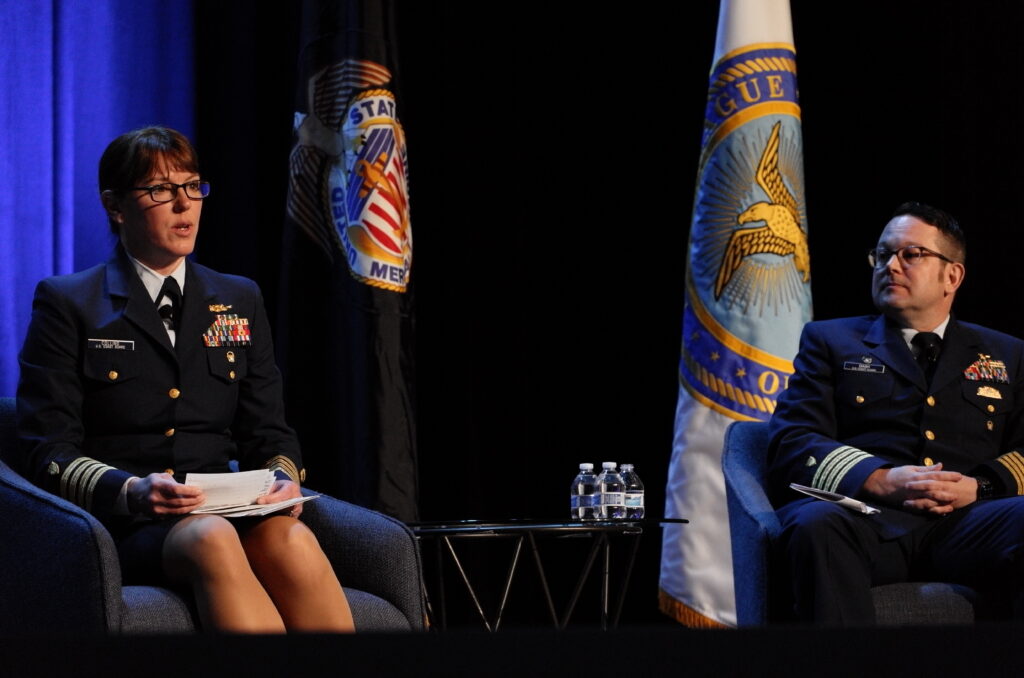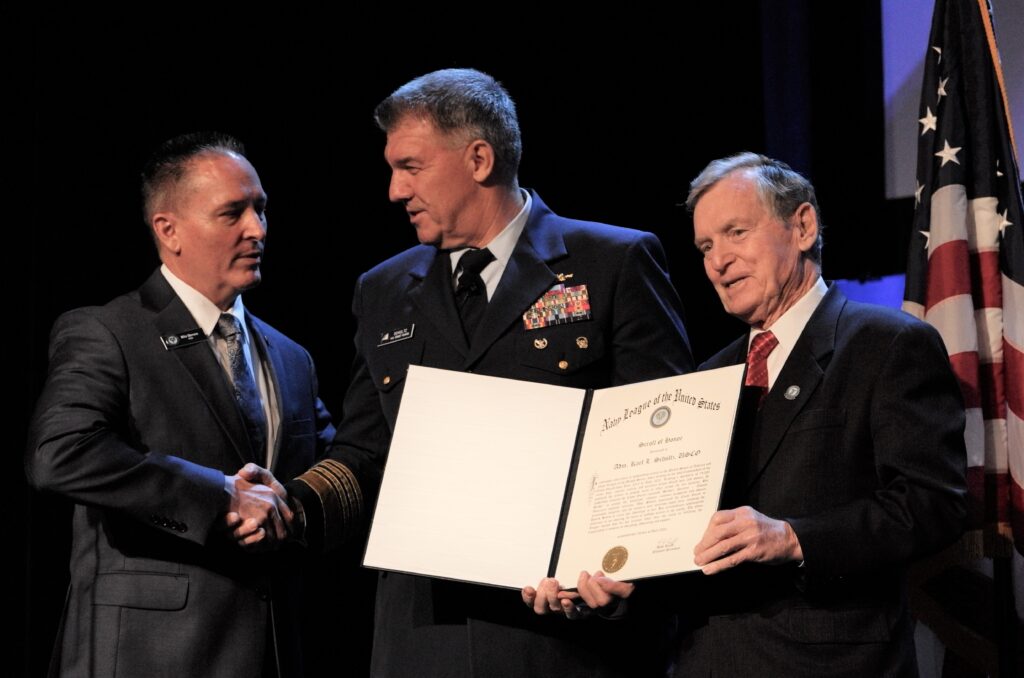
NATIONAL HARBOR, Md. — In his last Sea-Air-Space visit in uniform, U.S. Coast Guard Commandant Karl Schultz led a panel discussion about the service, which is rapidly seeking to upgrade its equipment, software and human resources to keep up in a competitive world.
“The demand for Coast Guard services, at home and abroad, has never been higher,” Schultz said.
He introduced his nominated successor, Adm. Linda Fagan, the current vice commandant, and her nominated vice commandant, Vice Adm. Steven D. Poulin.
“I will sleep well at night,” Schultz said. “They are rock stars and we are in good hands.”
Schultz guided the panel through a discussion of how the service is upping its game when it comes to connectivity, human resources and equipment, including ships to replace or augment an aging fleet.
Capt. Russell E. “Rusty” Dash, the C51 Service Center commanding officer, said under Shultz’s direction the Coast Guard kicked off a “tech revolution” in March 2020, to try to get away from the service’s reputation of delivering “yesterday’s technology tomorrow.
“The tech revolution is about empowering the people of the Coast Guard with reliable, mobile and integrated capabilities so they can better do their job,” he said, noting that most Coast Guard work doesn’t take place behind a desk.
It’s a mobile-first approach that gives Coasties the hardware and apps they need to “do their work wherever they do their work,” and includes beefing up cutter connectivity as well as on-shore networks.
The service is also getting ready to turn on a “software factory,” based on the Air Force software factory model, to promote “software developed by Coasties for Coasties in a standard way,” Dash said.
Capt. Laura D. Collins, acting director of civilian human resources at the Diversity and Leadership Directorate, said the service is taking a similar approach with its people.
“We want a best-in-class workforce for a best-in-class Coast Guard,” she said, building on a document called Ready Workforce 2030, which calls for modernized learning and training tailored to the individual.
“In order to be the employer of choice, we’ve got to train to retain,” she said, including on-demand e-learning not just training at dedicated centers.

Rear Adm. Douglas Schofield, assistant commandant for acquisition and chief acquisition officer, highlighted new ships coming on line, include the offshore patrol cutter and a new icebreaker.
The offshore patrol cutter joins new national security cutters and fast response cutters, and will complement them through its presence in exclusive economic zones and beyond.
“It is critical for that multi-mission presence that you always talk about, sir,” and has “outstanding human system integration,” including common boat launch systems and helicopter accommodations.
Schultz noted there is significant conversations about how many ships the U.S. Navy has, but the question of how many ships the Coast Guard has tends to fall under the radar.
“We’re going to have a fleet of 100 new ships here. When you roll in these 11 national security cutters … 64, now 66, fast response cutters, 25 OPCs, that is a fleet of 100 very capable ships … I think that 100 is going to continue to up our game.”
At the end of the breakfast, Schultz was presented with the Navy League Scroll of Honor by National President David Reilly and CEO Mike Stevens.






